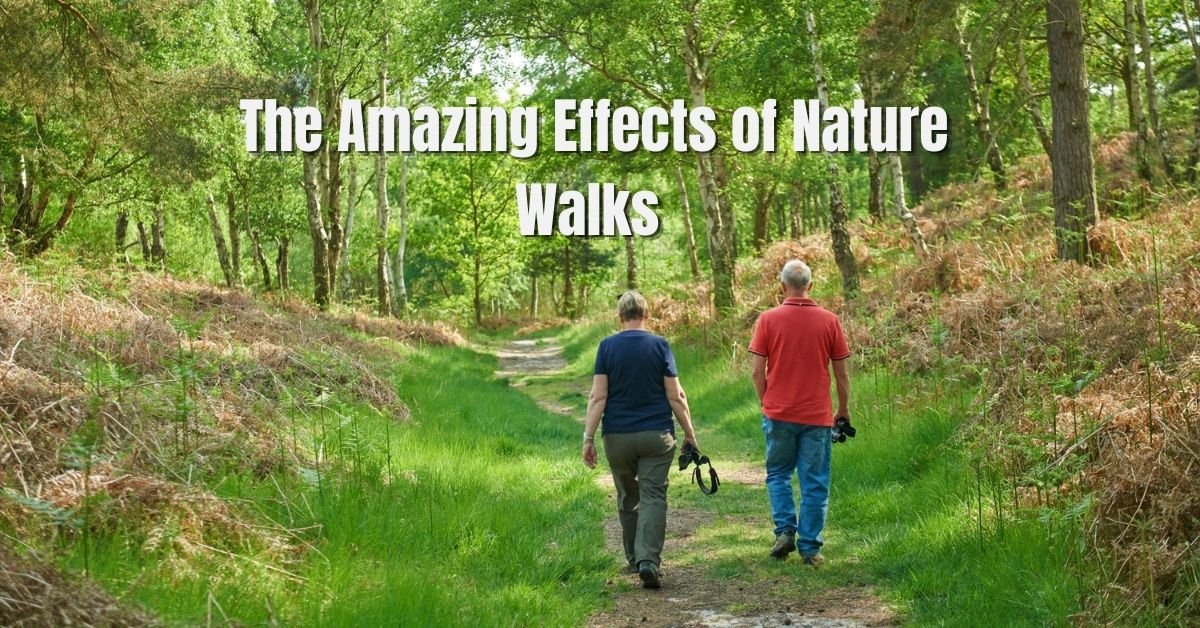The Amazing Effects of Nature Walks on the Human Brain. In India, the pace of modern life is not only fast, but it has opened the flood gates of mental disorders, namely mental stress, depression and anxiety. A study revealed that a significant cause for such mental disorder is rapidly increasing urbanism. From villages, more than half the world migrates to cities, and better earning, health facilities, and education come to the cities. But the environment here turns us to mental exhaustion.
A recent study has revealed that even taking a one-hour walk in a natural environment right away can reduce mental stress. This study was done by the Max Planck Institute for Human Development, Germany, and has been published in the journal “Molecular Psychiatry.”
Increased mental illness by urbanization
According to researchers, urban life has become a significant risk for mental health. Schizophrenia, a serious mental illness, is 56% more likely to be found in urbanized people. This illness is found to be directly related to the urban environment irrespective of family history or social support. This means that the social pressure of cities bad effects the mental health of people.
Between nature and brain, a deep relationship
Human nature and nature are deep in relations: this is called the ‘Biophilia Hypothesis’. Biophilia Hypothesis believes that humans have a natural inclination towards trees, plants, rivers, and mountains. There are two main theories related to this, “Attention Restoration Theory” (ART) and “Stress Recovery Theory” (SRT). It says when we are in nature, intuitively our brain catches it, and we have enhanced concentration. On the other hand, SRT says that nature calms us down and gradually reduces our stress.
What changes a person walking in nature brings in the brain?
This research is primarily concerned with understanding what transforms in a human brain when he walks an hour in a natural place. For this, they selected two types of places: one was a natural greenery-filled place, and the other was a bustling urban street. Before and after walking in both those places, functional MRI was done in the brains of the participants.
Three parts in particular were the focus of the study-amygdala, anterior cingulate cortex (ACC), and dorsolateral prefrontal cortex (dlPFC) in particular. The amygdala is the part that associates us with fear, anxiety, and stress.
How does natural walk affect amygdala behavior?
The research found that there was a significant decrease in amygdala activity in individuals who returned from nature after a one-hour walk. In contrast, the activity of amygdala in individuals who returned from an urban walk did not exhibit significant changes. Interestingly, after natural walking, their reaction became more subdued, whether the participants were looking at a fearful or normal face.
This change was not only seen in unmasked faces, but also in masked faces: those faces are presented for very short periods and then hidden immediately. This means that this response is no less affected at a subconscious level.
Opinions and experiences of participants
It is interesting that even if the participants had lower stress in the brain scans, they did not say openly that they felt very relaxed in general. However, they did say that the nature walk was more pleasant and relaxing and they wanted to do it again. Urban walks were tiring and less pleasant for them.
Does nature actually save us stress?
Results of the study, spending time in the eco-system, not only provide an immediate change, but also make our brains less sensitive to stress. Especially when these structures like the amygdala become calm, it means that our brains are dealing with negative emotions of fear and anxiety more easily. The results also proved that the effects of taking walks in nature were quite effective not only on visible faces, but there was also an indirect effect.
Fitting Balance: Urban Life and Rural Life
It pretty much confirms the fact that people in villages or forests are mentally more stable and also much more calm. The activity of the amygdala has been lesser. On the contrary, people in cities, especially those who do not stay close to greenery are more prone to mental illness.
Next Step: Integrating Greenery in Cities
Increasing urbanization is such that in a matter of decades about 70 percent of the population will come to live in cities, it has thus become obligatory that great importance is attached to greening at the planning of cities. Parks, gardens and green spaces are not only pleasing to the eye; they are also providing relief to the mind. This can be termed ‘Green Prescription’ – that is, referring trees to a doctor for stress relief!
Conclusion: Nature is the real medicine for the brain
This study brings forward the stark truth of a nature walk, a strong and sound alternative to drug therapy in the management of urban stress. All we need to do is to make it a habit of spending some time in the green world in our daily lives-walking in the park or passing through a street lined with trees and plants. Nature will not only relax you but also rejuvenate your mind.
